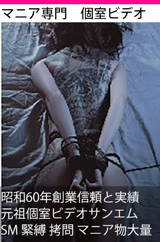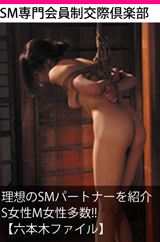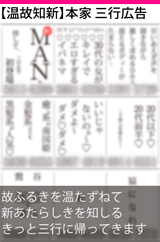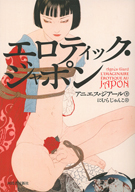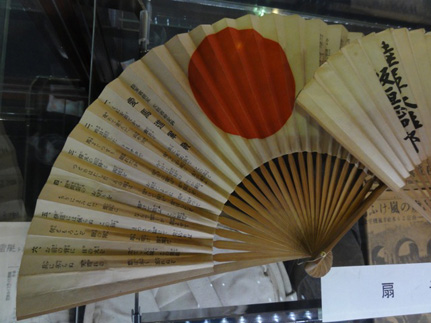
Erotical Parade Japan
フランス人ジャーナリストのエロティック比較文化論
気鋭の女性フランス人カウンターカルチャー専門ジャーナリスト、アニエス・ジアールが、「奇妙で豊穣な性文化」について日本の様々な文化的側面から掘り下げていくユニークな比較文化論。今回のテーマは扇。日本人には馴染みの深いアイテムですが、皆さんはその由来や意味をご存知ですか?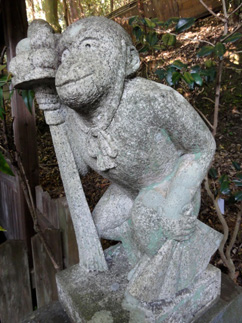
私は扇のシンボリズムをたくさんリサーチしてきた。
扇は日本独自のもののようにみえるが、もしかしたら今やスペインで有名なロマ("gitanos", "Tziganes", "Romanichels", "Manouches")から伝わったのものかもしれない。大昔このボヘミアンたちはインドからヨーロッパへと移動し、そしてアジア奥深くへも移動した。でも日本の扇がフラメンコの扇に影響を受けていると証明できる者はいない。
2010年の12月に、日本大学の日本美術の専門家に、扇のシンボリズムについて尋ねたことがある。彼が説明してくれたことを全て理解できているか定かではないので、彼の名前をあげるのは控える。
彼が言うには「日本の扇は笏(しゃく)と同じ形をしている。笏は"権力の象徴"だった。なぜなら笏は、紙が使われるようになる前、貴族たちが、公的な布告を記すのに使っていたものだからだ。大事な儀式の際に、人々は笏をノートがわりに使っていた。長い儀式では、一本の笏では足りず複数の笏を使った。というわけで、人々は笏の根本に、かなめという穴をあけて、笏をつなげて使った。だからかなめは女性器(穴)と似ていて、笏はファリックなもの(棒)だ。扇は笏をつなげたものと同じ形と同じ意味をもっていた。棒を広げると、太陽の光線のような形になる。だから複数の笏や扇は、幸福の共有を連想させる。扇を広げると、扇を持っている手はその象徴的な光の源となる。光やエネルギーを分かち合い、悪は追い払われる。これは答拝(たっぱい)といって非常に重要な日本語である。天皇や皇族が公衆の前に現われるとき、彼らは特別な手の動かし方をする。アメリカ人やヨーロッパ人のように左右に手を振らず、前後に振るのだ。これは邪を追い払い、福をもたらす動きだ。
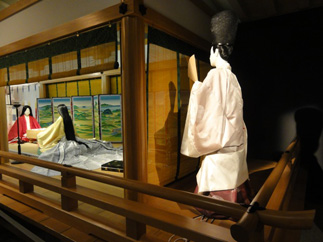
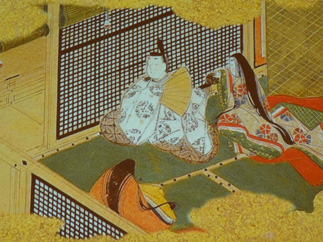
私は"Dictionary of Love and Pleasure"(2009)で、扇の象徴性について同じようなことを書いたことがある。日本で一番有名な滝は、イザナミの墓所(※編註1)近くにある那智滝なのだが、そこでは毎年7月に、大規模な祭りがおこなわれる。巨大な柱は滝に水平に運ばれ、柱にはファリックなシンボルである馬が書かれていた。現在では扇に変わっているのだが、これらの柱の前に火が運ばれる。柱は、滝の前に運ばれると、垂直にたてられる。そして一種の宇宙的交わりのために振られる。この祭りはとても神聖で神秘的なので、那智滝は霊的に非常に重要な場所となっている。那智滝を描いた最初の絵(※編註2)は13世紀にさかのぼり、東京の根津美術館で観られる。その絵では、那智滝の端から月輪が現われているので、まるで水が月から流れ出ているように見える。この絵画は宗教的なもので本地垂迹画といい、神を示している。神とは自然の中に隠された美と願望である。神は森羅万象の婚姻である。
扇には他にも重要な側面がある。富士山と同じ形をしているのだ。
それはファリックな象徴であり、噴火(射精)や溶岩(温かい精液)は強く繁栄とむすびついている。
また空気の流れをつくる扇は風を想起させる。風は命の力やエネルギー、活力、そしてもちろん世界の起源における"聖霊"とも関わりがある。聖書では、神は自らの息によって宇宙を創ったというが、古事記では神聖な風(風の神)は、イザナギの聖なる“柱”と関連している。万葉集にはこれに関するエロティックな和歌がある。「私の簾(すだれ)のすきまからどうぞ入ってきてください。私を愛し育ててくれた母が尋ねたなら、ただの風だと答えましょう」。
ペニスは風のようものだ、ひらけた空間ならどこでも通っていってしまう。物の内側に入り込み、人の深いところまで入る。そして内なるものを繁殖させるのだ。ペニスは風のように我々を物事の深い現実へと引き込む力があるのだ。
というわけで、伝統的な絵画に見る家や風景は、扇状にひろがっている、並行ではない。
ヨーロッパのアートでは、ルネッサンス以降、アーティストは主に遠近法を使ってきた。
日本では、長いあいだ主に不等角投影図法を用いてきた。
世界へと開かれたパースぺクティブである。線は曲がり、世界は自分に属しているとばかりに広がっていく。まるでリアリティ全体が自分の目に集中するかのように、自分の脳が全てを見ることができるかのように、世界が美しい扇のように目前に広がっているかのように、そしてまるで贈り物のように繰り広げられる。
文=アニエス・ジアール
翻訳=前田マナ
翻訳=前田マナ
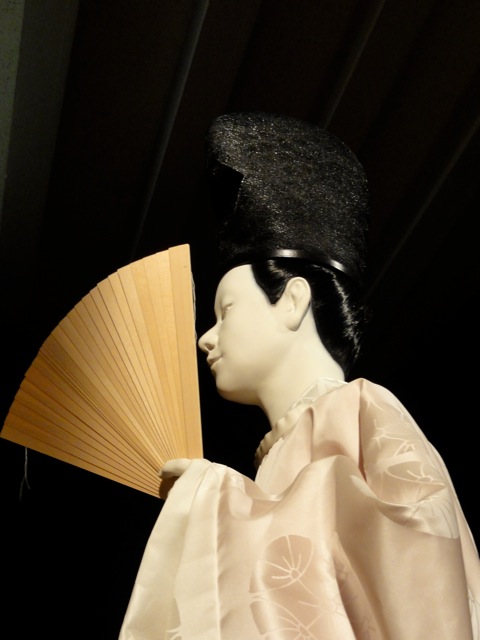
Ogi Symbolism and the Japanese mind : happiness comes in, evil goes away
On Tetsugaku no michi, there is a nice little "jinja" called Otoyo Jinja, with many animals.
One of my favorite statue is this one: a monkey wearing a fan.
I made many researches on the symbolism of Ogi (fan).
It seems that fans originated in Japan. But maybe it was an influence from these travelers that are now famous in Spain: the "Roms" ("gitanos", "Tziganes", "Romanichels", "Manouches"). In very ancient times, these "bohemians" used to travel from India to Europe, and sometimes more deeply into Asia… But nobody can testify Japanese fan was influenced by the "flamenco" fan.
I asked a Japanese art-teacher from Nippon Daigaku about the symbolism of fan, in December 2010. I am not sure I did understand his explanation well enough, this is why I will not mention his name.
He told me: "Japanese fan has the same shape as "shaku". "Shaku" used to be the "power symbol", because it was used by aristocrats for writing official decrees (before paper became more usual for writing). During important ceremonies, people had their "shaku" as "note-book". When the ceremony was very long, they had to get more than one "shaku". This is why, they put a hole at the base of the "shaku": a "kaname". And the shaku were tied together… "Kaname" was like a woman's sex (hole). "Shaku" was phallic (stick). Fan has same shape and same meanings… When you spread the sticks, it's like sun-rays. Multiple "shaku" and fans are related to the sharing of happiness. When you open the fan, your hand becomes the source of symbolic lights. You share your light and your energy and evil is thrown away. This is called Tappai. It's a very important word in Japan. When "tenno" and his imperial family appear in public, he makes a very special movement with his hand. He does not shake it from left to right, like American or European people. He shakes it from behind to front. It's a way to repel evil and to deliver happiness."
In my "Dictionary of Love and Pleasure" (2009), I had written something about fan symbolism that is quite similar: "the most famous riverfall in Japan is Nachi, in Kumano, near Izanami's tomb. Every year, in July, there is a big matsuri in Nachi no taki: huge pillars are carried towards the river fall in horizontal way. On these pillars, there used to be horse images (phallic symbol). These horses were replaced by fans. In front of these pillars, there are people carrying fire. In front of the river fall, the pillars are put in vertical way. Then, they are "shaked", for a kind of cosmic coitus. This "matsuri" is such a divine and mysterious event that the Nachi river fall became one of the most important place for spirituality. The first painting of Nachi no taki dates back from XIII century. You can watch in Nezu Museum in Tokyo. It shows the moon appearing on the edge of Nachi no taki. The water seems to come out of the moon. This painting is religious, it's a "honji-suijaku-ga": it shows god. God is beauty and desire hidden in nature. God is a wedding between elements."
There is something else about Ogi, very important: it has the shape of Fuji-san.
It's a phallic symbol, because volcanoes can erupt (ejaculate) and their lava (hot sperm) is strongly connected to fertility.
Also Ogi is related to wind: it creates air wave. Wind is connected to life force, energy, vigor and, of course, to "holy spirit" at the origin of the world: in the Bible, God creates the Universe with his breath. In the Kojiki, divine wind (Kaze no kami) is also strongly associated to Izanagi's sacred pillar. There is a very erotic poem in "Manyoshu" about it: "Through the holes of my bamboo store, please come in. If my mother who raised me with love asks me, I will tell her: "It's only the wind".
Penis is like the wind: it goes through every open space, it goes inside things, it goes deep into human being, and it fertilizes its inner essence. Penis, like the wind, has the power to make us enter into the intimate reality of things.
This is why - in traditional paintings - the houses and landscape have the same shape as Ogi: it's not parallel.
In European art, since Renaissance, artists mainly use linear perspective.
In Japanese art, artists kept using axonometric perspective for a very long time.
It's an open perspective on the world. The lines are distorted. They go wider and wider, as if the world could "belong to me". As if the whole reality was converging to your eye. As if your brain was able to see everything. As if the world was opening like a beautiful fan in front of you. Like a present.
text=AGNES GIARD
アニエス・ジアール最新刊『エロティック・ジャポン』(河出書房新社)発売!!
『エロティック・ジャポン』
著者: アニエス・ジアール
翻訳: にむらじゅんこ
発売: 2010年12月22日
定価: 3,990円(本体3,800円)
ISBN: 978-4-309-24534-8
出版社:河出書房新社
内容:あまりに奇妙で、あまりに豊饒な日本のエロス的イメージ! 気鋭のフランス人女性ジャーナリストが論じる大胆な日本のエロティック・カルチャー……ロリコン、人形、制服フェチ、コスプレ、メイドカフェ、援助交際、風俗産業……現代アートや浮世絵、風俗雑誌など、約300点にのぼる豊富な図版を収録!
著者: アニエス・ジアール
翻訳: にむらじゅんこ
発売: 2010年12月22日
定価: 3,990円(本体3,800円)
ISBN: 978-4-309-24534-8
出版社:河出書房新社
内容:あまりに奇妙で、あまりに豊饒な日本のエロス的イメージ! 気鋭のフランス人女性ジャーナリストが論じる大胆な日本のエロティック・カルチャー……ロリコン、人形、制服フェチ、コスプレ、メイドカフェ、援助交際、風俗産業……現代アートや浮世絵、風俗雑誌など、約300点にのぼる豊富な図版を収録!
関連記事
欧米フェティッシュ・ジャーナル Fetish Journal
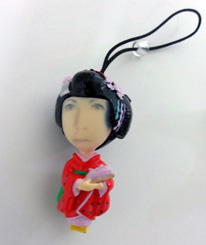
アニエス・ジアール - AGNES GIARD - 1969年生まれ。仏リベラシオン紙のジャーナリストであり、主にカウンターカルチャーや性に関する記事の専門家。日本のエロティシズムについて言及した著作 『エロティック・ジャポン』(仮)、『図解 ビザール・セックス全書』(仮)がそれぞれ河出書房新社と作品社より近日刊行予定。現在は京都の関西日仏交流会館ヴィラ九条山に滞在しており、日本における様々な恋愛物語についての本を準備中。

前田マナ 英国ランカスター大学演劇学部修士修了。専門は現代演劇やコンテンポラリーダンス。
ライターとしてウェブや雑誌等に雑文なども寄稿。
11.03.17更新 |
WEBスナイパー
>
エロティカルパレード・ジャポン!!
| |
| |


